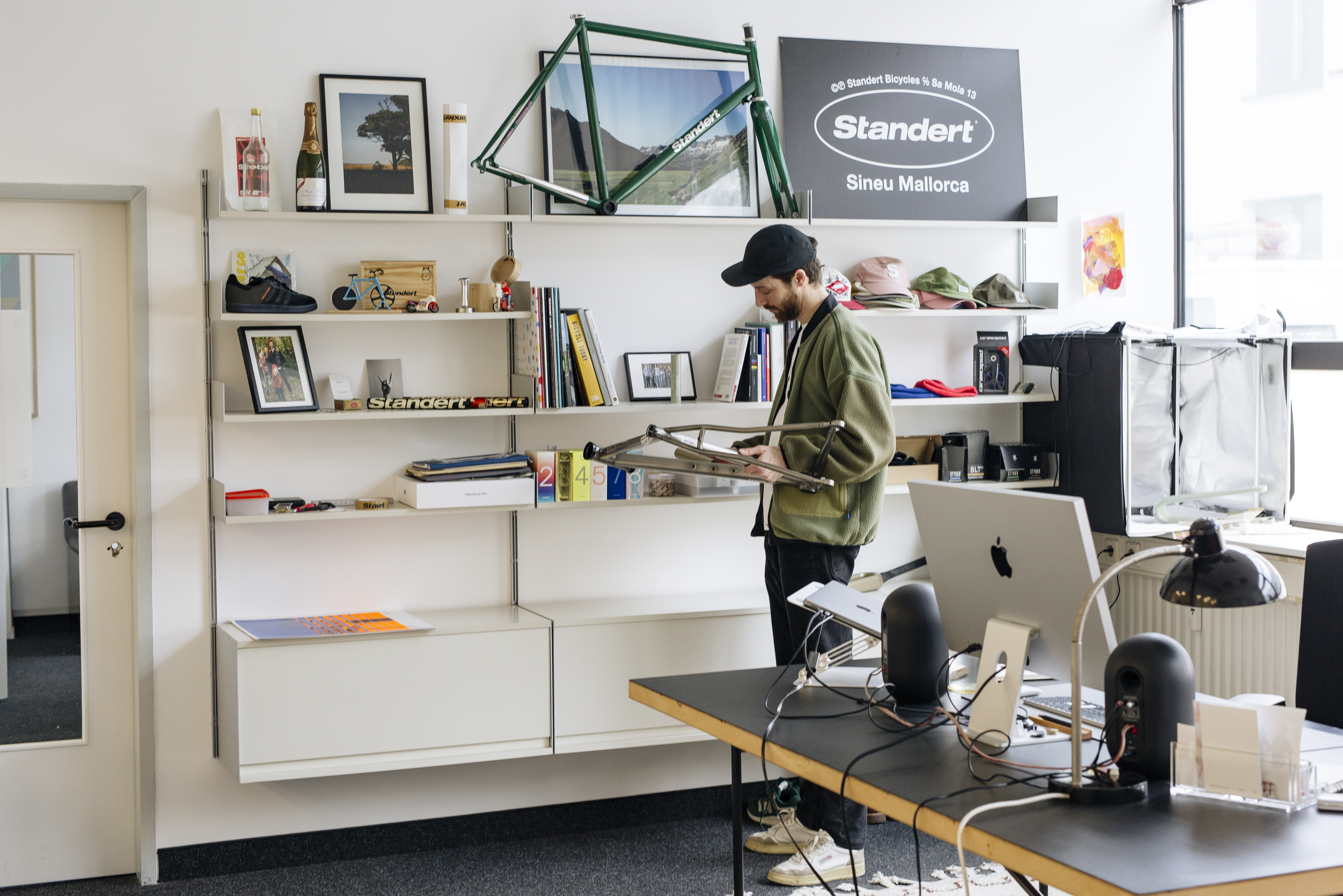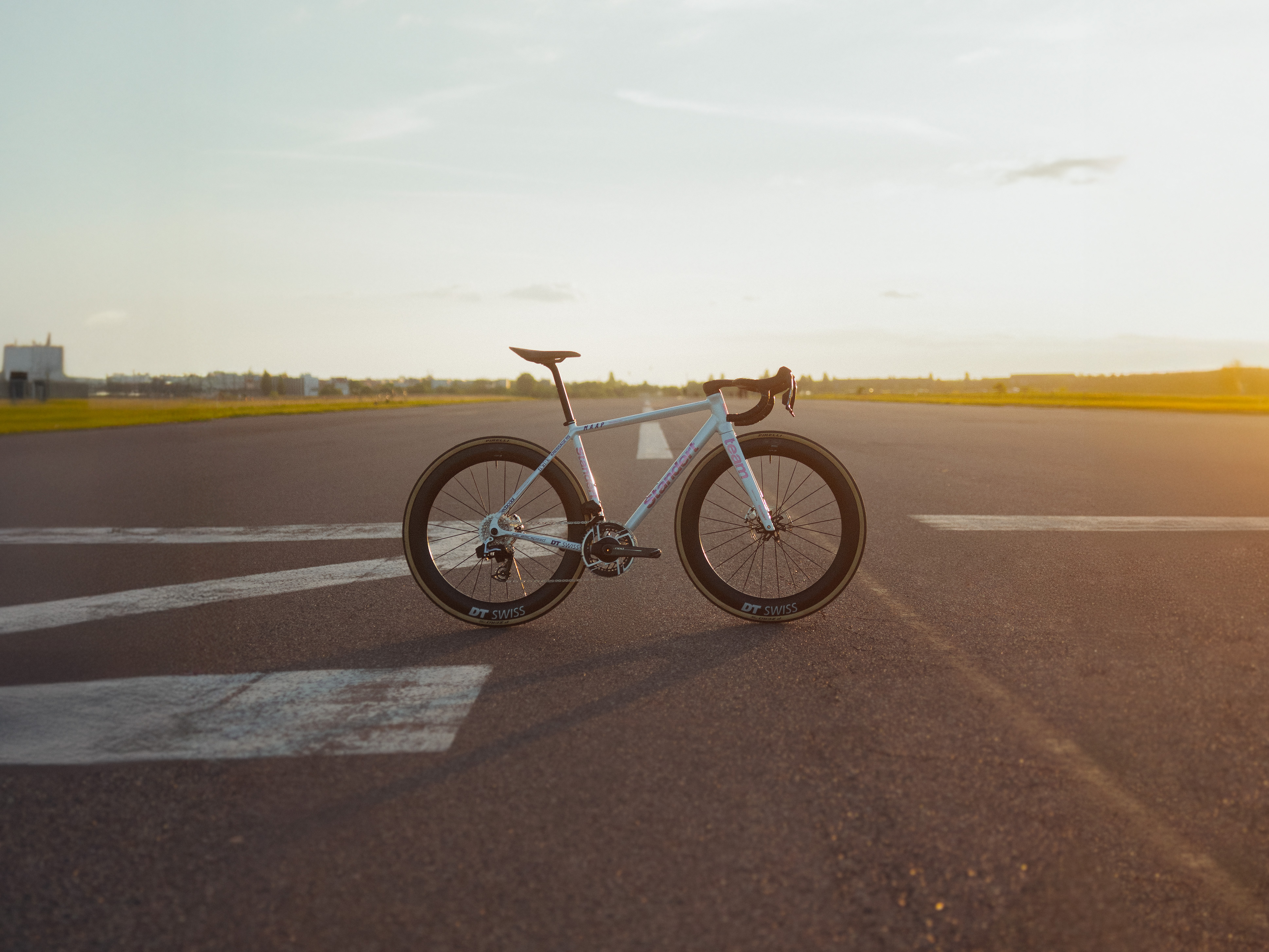'We're trying to find our space' – cult German bike maker Standert stands at a crossroads
Brand's CEO tells Cycling Weekly about the past and the future of the company


There are some bikes that make me stop and stare, when seen in the real world. There are those classic bikes which are head turners, or when someone turns up at the café on a professional-level machine, and I'll always have a soft spot for a Bianchi in proper Celeste. However, there's an elusive bike brand that always makes me look – Berlin-based metal bike builders Standert.
Coming only in aluminium and steel, in simple colourways, the bikes have cult appeal for a reason; I think I've only ever known one owner in my home city of Bristol, and he never escaped questions about his machine.
They are scarce, particularly outside Germany, but this has never been a deliberate ploy, co-founder Max von Senger tells Cycling Weekly.
"The organic development of the whole thing has brought us to this place where people tell us, ‘Oh you've got to be careful because you might damage the brand because part of the appeal is that not everyone has it’," he explains.
"It's sort of exclusive in that it's a niche product but it's not a fabricated thing that we planned. We have just never made more frames that we’ve been able to make, and with metal it is a bit niche by default in the way.
"We’re not saying we want to keep it exclusive or only affordable and available to a very limited number of people, but we’re also not saying that we are going to push hard to become the next Canyon," he continues. "We’re just hoping to continue to make it sustainable. Keep doing what we love to do, bringing out new bikes, working on them, and living the life around bikes that we as a company enjoy."
Standert now stands at a bit of a crossroads. It has come a long way from humble beginnings as a cycling cafe 13 years ago to the cool brand it is now, but with that have come questions over what is next. The brand sells around 3,000 bikes a year, which is a lot for a small 'boutique' bike maker, but nothing compared to bigger names. The bikes are no longer assembled at the shop in Berlin, but at a facility in western Germany, after the frames are made in Italy, China, Taiwan, and the Czech Republic, depending on the material used.
The latest race content, interviews, features, reviews and expert buying guides, direct to your inbox!

"In the last three years maybe we’re sort of trying to find our space a little bit, because maybe we’re a bit in limbo, a bit of a no man’s land," Von Senger says. "We’re not really a small builder anymore, but we’re not a big company. We’re still 100% founder owned, and we’re making everything work with the team we have on the small budgets that we can muster. We’re not really big either. We’re trying to find our space."
He adds: "It's been a real challenge because Covid struck us completely unprepared. When we grew so fast in that time, it was all chaos and and we really had to work hard to to catch up with the processes in the company and with the products and everything.
"Now it’s challenging to know if we should try and continue to grow? Are we in a good spot now? Do we actually have to get a little bit smaller? You know, it's always dependent of course also on the performance of the company and we're trying to manoeuvre it."
The journey to where Standert is now, as an established brand, has not been simple, and not just because of the boom and bust of the bike industry in the last five years. It has been a steep learning curve for Von Senger, and the company is still founder-owned and run – it's also owned by Anna von Senger, his wife.
"[The journey is] beyond my wildest dreams for sure," he says. "When we started out, I was actually still in university and my sort of plan was to open this bike shop/cafe, get it running, take a year off university and then go back to studying and leave it. That was of course not what happened. I very much underestimated what it takes to get a place up and running. I never returned to university and just kept kind of rolling with where it took us.
"Then there was this moment around 2018/19 before Covid where there was a bit of a growth spurt, and it went a little bit over our heads. I was with my wife, who I founded Standert with without really being prepared for it. That was maybe the first time where we wanted to make this a real bicycle company.
"We looked at each other and realised that we needed to be a bit professional. Until then, I used to go riding every morning and get into the office at around 12."

The metal focus came from Von Senger's personal preference, and was there from the start, with the first bike being built while at uni – the degree never got finished. "I like the look and the feel and the whole aesthetic around metal bikes," he says. It makes sense, they are pretty.
Conversations over carbon are still happening; Standert sponsor a club team in Germany, Team Standert, which is successful on alloy frames, but might need a lighter, stiffer material were it to progress. However, the costs involved, from research and development to building make it tricky. The metal focus won't be going anywhere.
Von Senger explains: "We're excited about continuing the work on the metal side of things, maybe getting more creative with 3D printed parts or, you know, there's interesting new ways of thinking about metal. We’re still the metal guys."
Germany remains Standert's biggest customer base, but the brand has pull beyond its Teutonic heartlands. It has over 100,000 followers on Instagram, for example. "In a way the brand and the perception has almost outshone the actual operation, and without really knowing it we’re caught in a bubble," Von Senger says, sounding a little perplexed at the cult status.
"I don’t know how established we actually are, how many people have heard of us, but I feel the brand is definitely better known than the operation."
One place you can't get a Standert, though, is the US – Von Senger calls it a "a bit of a mess", which dates before the tariffs. However: "The US is almost constantly second behind Germany on the website in terms of traffic, but that doesn’t reflect at all in sales. There is interest there, I guess we could potentially work towards it with distribution."
As for what is next, Von Senger thinks of two things off the top of his head: "If I had my way, I would probably hope to hire a capable CEO and then work in design full-time, maybe apply my mind to cycling-related things.
"But for now, the main goal is hopefully in the next two years to work on the next-gen version of our aluminium performance bike. There’s really cool stuff we can do with that."
The self-effacing CEO might wish he could pass off some of the more serious parts of his business and get riding more again, but it is undeniable that the Berlin brand has built something special. Which way next?

Adam is Cycling Weekly’s news editor – his greatest love is road racing but as long as he is cycling, he's happy. Before joining CW in 2021 he spent two years writing for Procycling. He's usually out and about on the roads of Bristol and its surrounds.
Before cycling took over his professional life, he covered ecclesiastical matters at the world’s largest Anglican newspaper and politics at Business Insider. Don't ask how that is related to riding bikes.
You must confirm your public display name before commenting
Please logout and then login again, you will then be prompted to enter your display name.